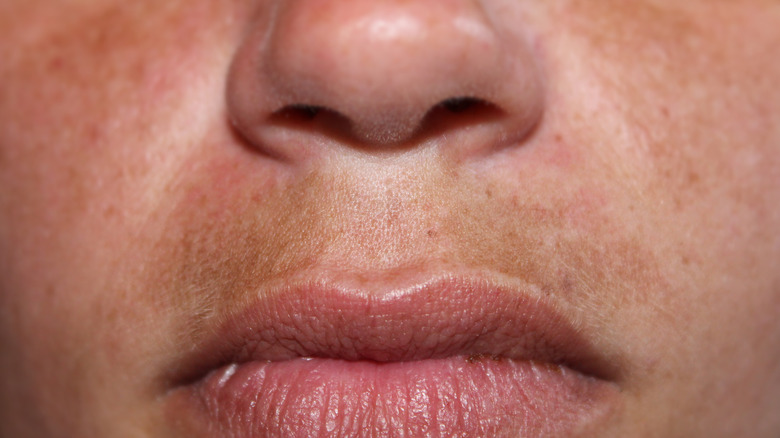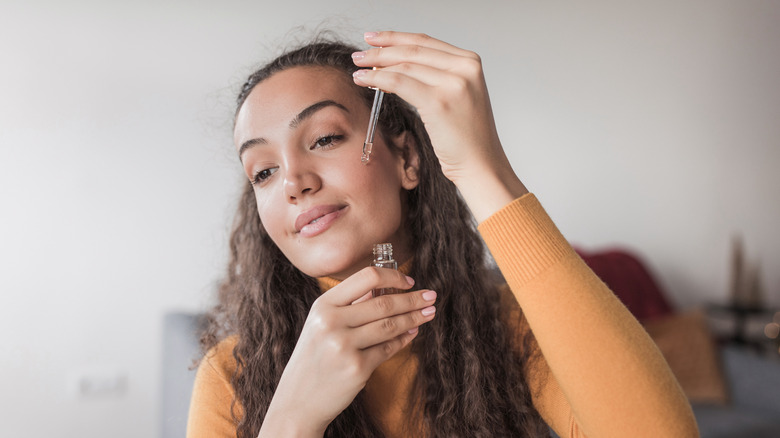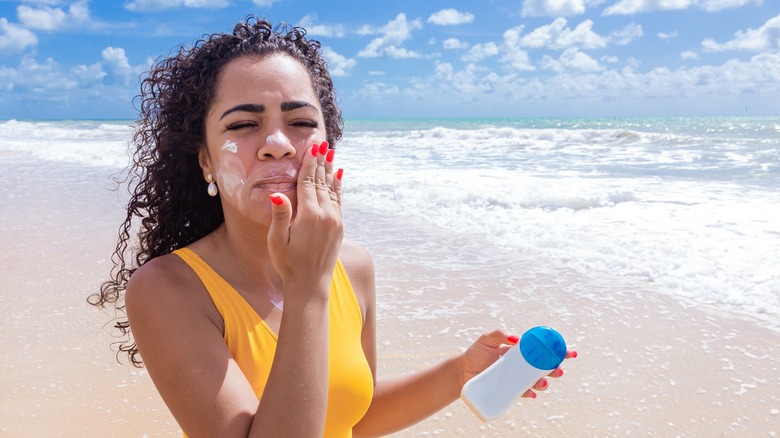Spending time in the sun has its health benefits, there’s no question about that. Catching sunlight can boost your mood, provide vitamin D, and help you stay in sync with your circadian rhythm. However, too much sun exposure can be damaging for your skin. Without proper care and sun prep, your skin can age and develop sunburns, inflammation, melasma, and even skin cancer. Adding some sunscreen — even to your face — can help prevent all of these from developing.
For now, we’ll focus on melasma, specifically on the infamous melasma mustache. Melasma is a skin condition that occurs because of an overproduction of melanin, resulting in discoloration and freckled spots. Your whole body is subject to melasma, but when the condition appears on the upper lip, it resembles tiny hairs, hence the name ‘melasma mustache.’ It’s common among pregnant individuals, but pregnancy is not a prerequisite. Causes of melasma include overexposure to sunlight, hormones, birth control, LED lights, makeup, skincare products, and certain medications. Women and those with darker skin are more likely to develop the condition than men and those with fairer skin.
While melasma may be unsightly, it’s harmless. “It is typically asymptomatic and doesn’t cause any pain or itching,” board-certified, New York-based dermatologist Marisa Garshick, MD, told Verywell Health. “That said, it can make people feel self-conscious or embarrassed.”
It’s treatable at home
Melasma tends to get worse in the summer and better in the winter month, and may even fade on its own. For those not wanting to wait, there are treatment options to minimize its appearance on the skin. Per The American Academy of Dermatology, in-office procedures like chemical peels and micro-needling can help clear up the visible appearance of melasma. At-home treatments such as topical tretinoin or retinoids, along with azelaic acid may also make melasma appear less harsh (though it’s important to note this doesn’t mean the melasma will completely go away.) It’s important to proceed with caution when using light and laser therapy or skin-lightening products. For example, hydroquinone — one over-the-counter product that is often suggested as a melasma treatment — could potentially trigger white spots in some skin types that make melasma look worse.
In any case, scheduling an appointment with a dermatologist is a great place to start, as melasma can often look like other more skin conditions, including skin cancer. They can help rule out other skin issues and work with you to figure out which option is best for your skin.
Sunscreen is a must
While there’s no cure for melasma, there are steps you can take to prevent it from getting worse. Avoiding sunlight, applying sunscreen, adding foods loaded with vitamin D to your diet, and using skincare products, such as serums, that contain antioxidants and vitamin C and E are all options you can try on your own. If you don’t see improvement, seeking professional help is the next step.
“No matter what the treatment is, adequate amounts of sunscreen must be used,” New Jersey-based dermatologist Saddle Brooke, MD, told New Beauty. He went on to suggest applying sunscreen 30 minutes before going out into the sun and reapplying it every two hours. Sunscreen is key for helping prevent melasma and keeping it from getting worse.
“When choosing a sunscreen, I recommend one that has physical blockers such as zinc oxide and titanium dioxide,” Florida-based dermatologist Asfa Akhtar, DO, told Cleveland Clinic. “You can even find physical sunscreens that contain iron oxide as an inactive ingredient making them tinted so they won’t leave a white film on the skin. Physical sunscreen sits on top of the skin, so it physically shields it and deflects harmful UV rays.” She went on to suggest wearing a wide-brimmed hat in addition to applying sunscreen for double the protection.







Leave a Reply